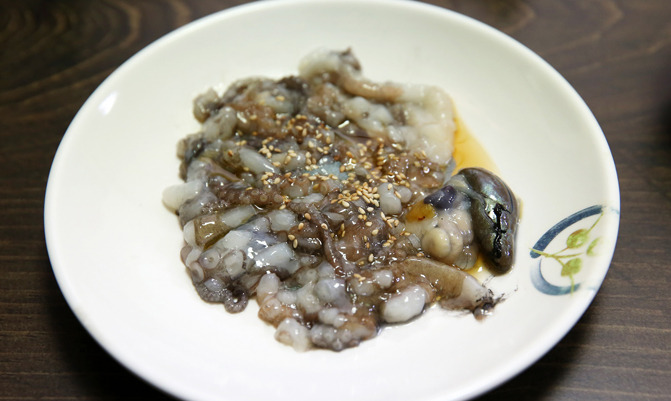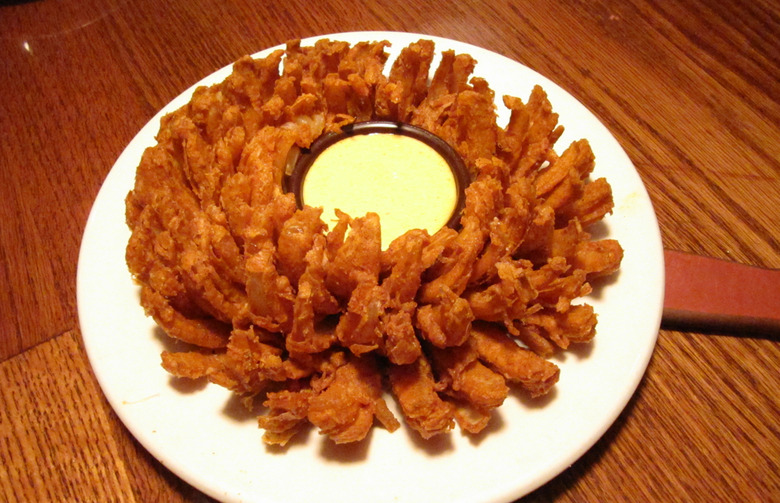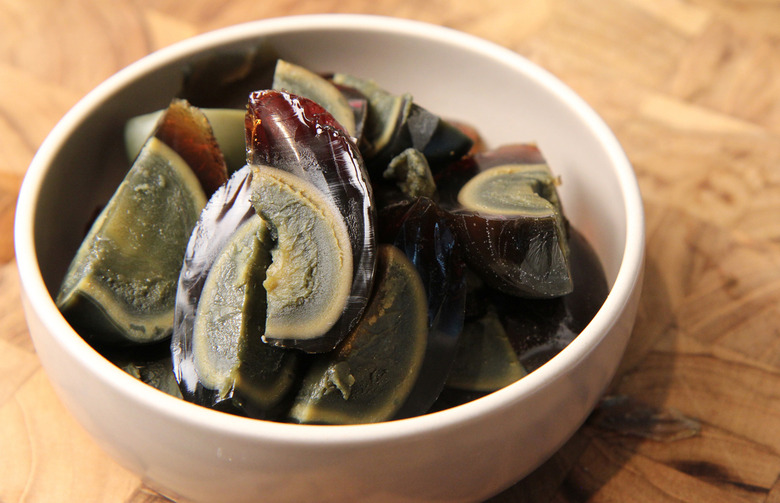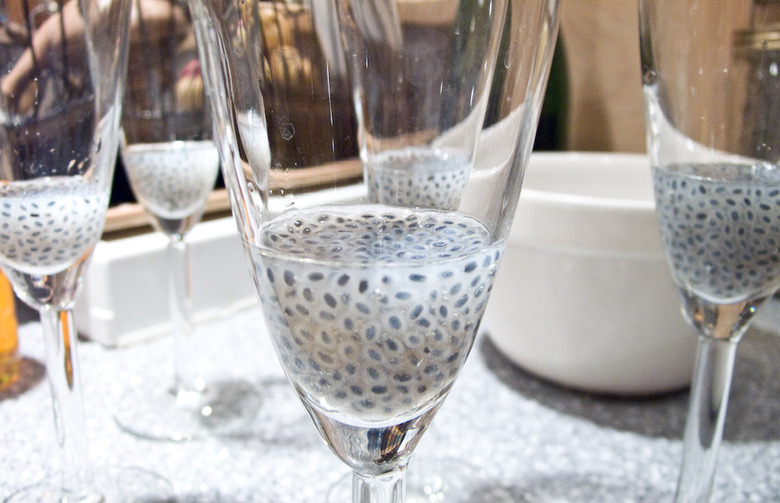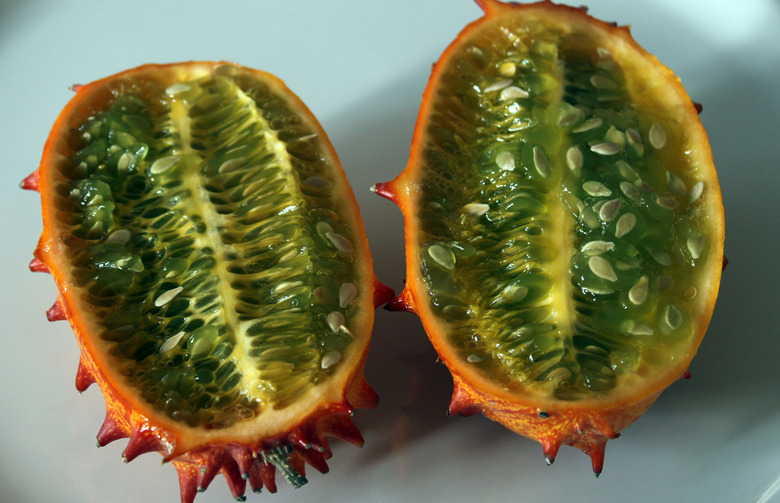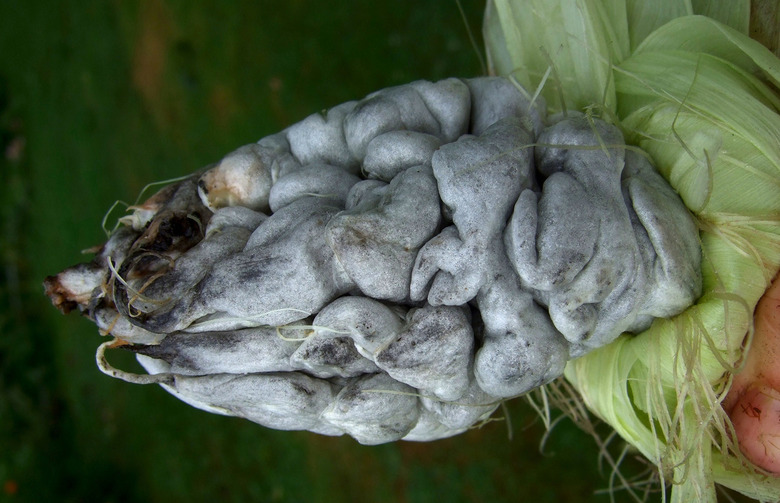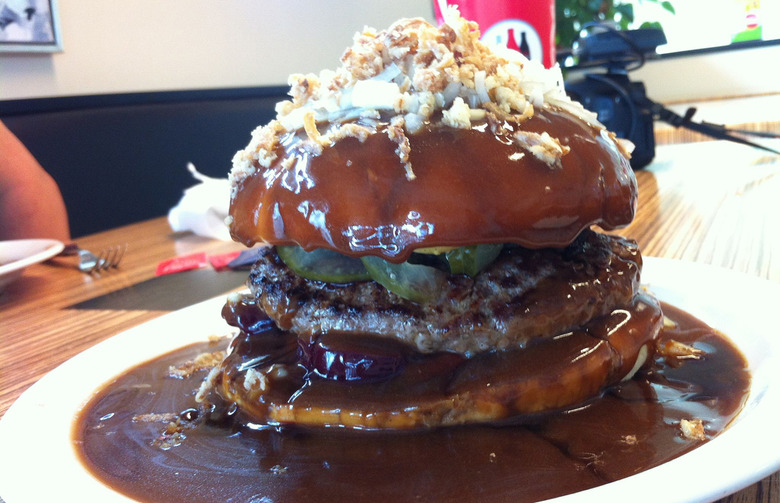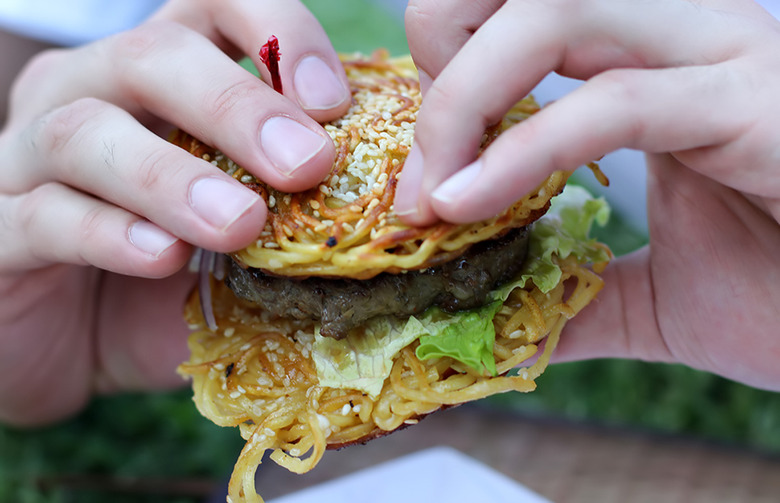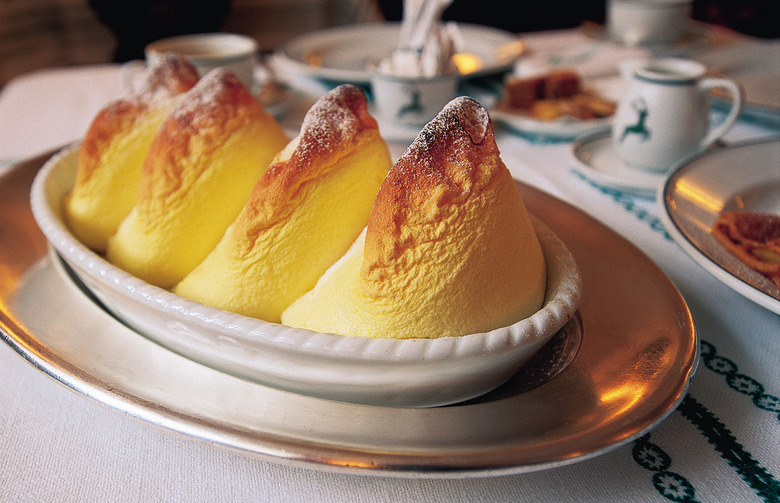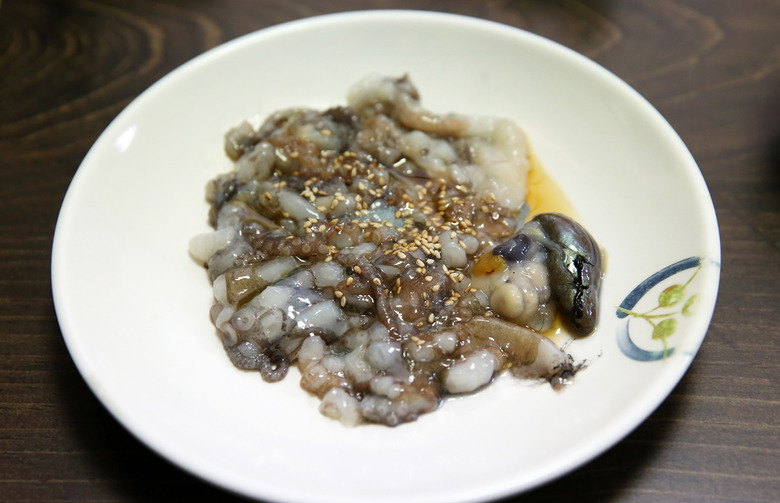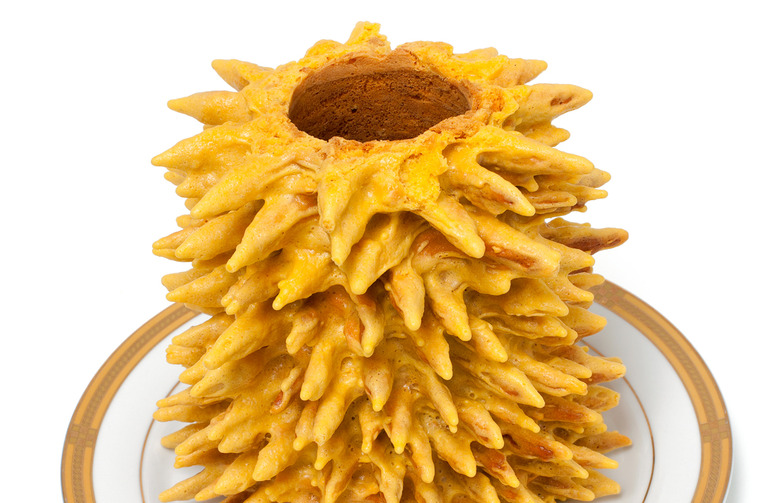Globally Unique: 10 Crazy-Looking Foods Around The World
There are a host of outrageous-looking French fries, ice cream sandwiches, pizza toppings, and bloody marys in America, but what about the rest of the world? Here are 10 foods that look so captivating that you'll probably stare at them for a while before you actually try a bite.
Blooming Onion (USA)
The blooming onion, popularized as the "bloomin' onion" by the Outback Steakhouse chain, is a dish consisting of one large onion cut to resemble a flower, battered, and deep-fried. It is the mother of all onion rings. We have a few recipes here.
Century Eggs (China)
When served, century eggs look more like large, gaudy pieces of jewelry than something edible. Also called thousand-year-old eggs, this dish consists of eggs preserved in a mixture of clay, ash, salt, quicklime, and rice hulls, which causes the yolk to become dark green or grey. They are eaten in China, Singapore, and other East Asian countries. It's just one of many ways people around the world enjoy eggs.
Falooda (India)
In this refreshing, milky drink with swirls of green- or magenta-colored syrup — usually a floral syrup like rose — you'll notice translucent, worm-like strings that resemble parasites under a microscope. Fear not: It is just vermicelli. Falooda, enjoyed in India and Pakistan, also commonly includes basil seeds, tapioca pearls, and pieces of gelatin with milk.
Horned Melon (Sub-Saharan Africa)
Have you heard of this fruit before? Also called "the blowfish fruit," the horned melon is a vine in the cucumber and melon family. It's certainly odd looking: bright orange and thorny on the outside. The inside consists of a vibrant green, tart jelly that has a slight cucumber-like crunch. The taste has also been compared to a zucchini and a banana. We guess you'll just have to taste it and decide for yourself.
Huitlacoche (Mexico)
Huitlacoche is the edible gall (tumor-like growth) found on corn that has been infected with the pathogenic fungus Ustilago maydis. In English, it is called "corn smut." Considered a delicacy in Mexico, it is similar to mushroom in looks and taste, and is commonly eaten in tacos, quesadillas, and other tortilla-based foods, as well as in soups. The James Beard Foundation once called it "Mexican truffles" during a high-profile huitlacoche dinner held in 1989.
Jutland Bøfsandwich (Denmark)
Bøfsandwich is sort of like poutine, except the burger, not the fries, is covered in gravy. In the Jutland region in northern Denmark, the bøfsandwich is typically served with sliced beets on the inside and brown gravy poured over the top. If it interests you, you can eat it at Hyttefadet, a burger joint by the water in the town of Hirtshals.
Ramen Burger (New York and Japan)
The ramen burger was voted one of the 17 most influential burgers of all time by Time Magazine, with good reason: We're so used to seeing burger buns as uniform, but the chaotic strands of noodles really pushed the button for innovation in food. While you can find a regular ramen burger at Ramen Burger in Brooklyn, where it was invented, for a true visual masterpiece, check out the triple-patty inverted ramen burger at the Lotteria chain in Japan.
Salzburger Nockerl (Austria)
This soufflé is served in peaks in order to represent the mountains surrounding Salzburg, Austria, where the dessert originates. Sweet dumplings are made of egg yolk, flour, sugar, and vanilla and mixed with egg whites until stiff and moldable. It's not an easy dessert to make at home, so eat it where the chefs are well-practiced, at the opulent St. Peter Stiftskeller Restaurant in Salzburg.
Sannakji (Korea)
It may not look that crazy at first — until you realize what you are eating is alive and squirming. Sannakji is octopus dressed with sesame oil and sesame seeds and served immediately; it has to be eaten alive. Movie buffs may remember the scene from Oldboy in which Oh Dae-su, after 15 years of imprisonment, is almost choked to death by the octopus's tentacles while eating this dish. It's one of those foods that might scare Americans.
Šakotis (Lithuania)
Šakotis is one of many kinds of European "spit cakes" for which layers of dough are deposited, one at a time, onto a tapered cylindrical rotating spit, then baked by an open fire. While all of these baked goods look wild and spiraled, šakotis definitely, um, takes the cake for its pinecone-like shape.
